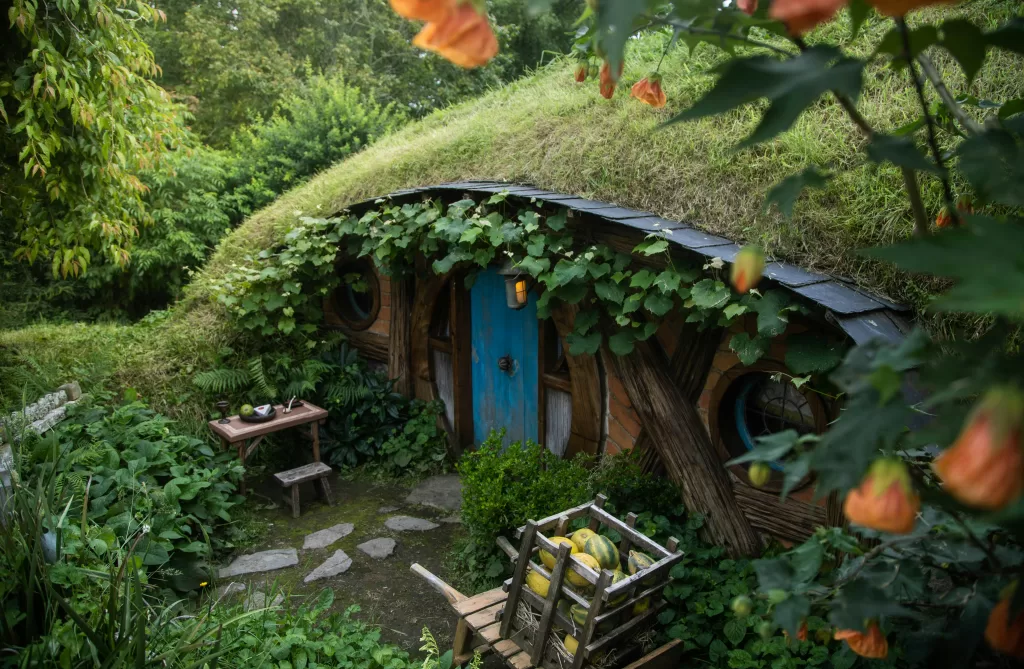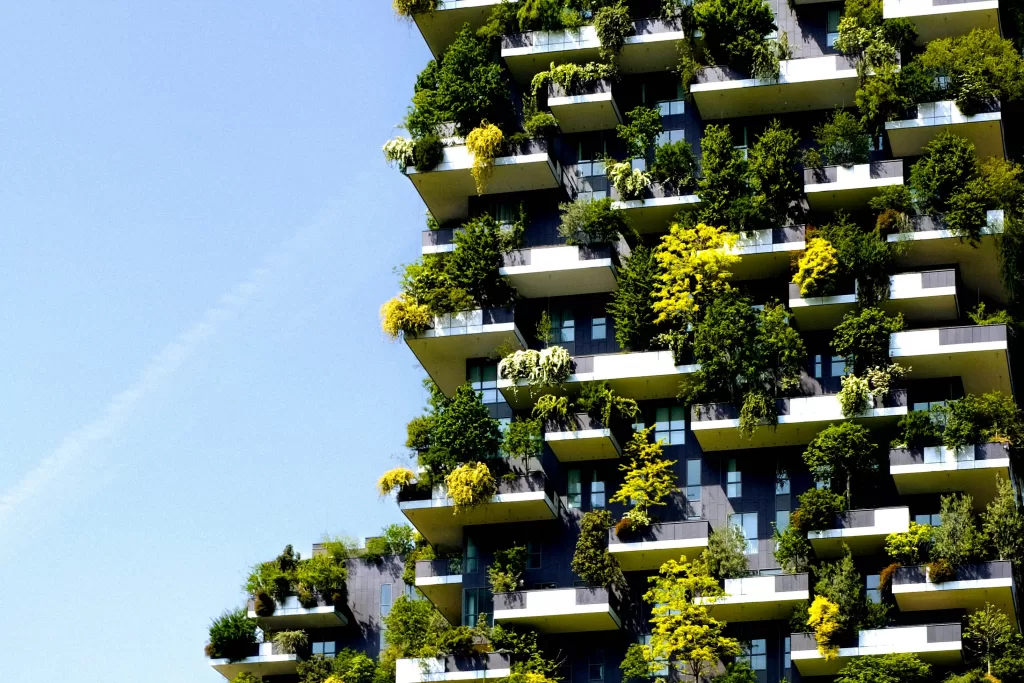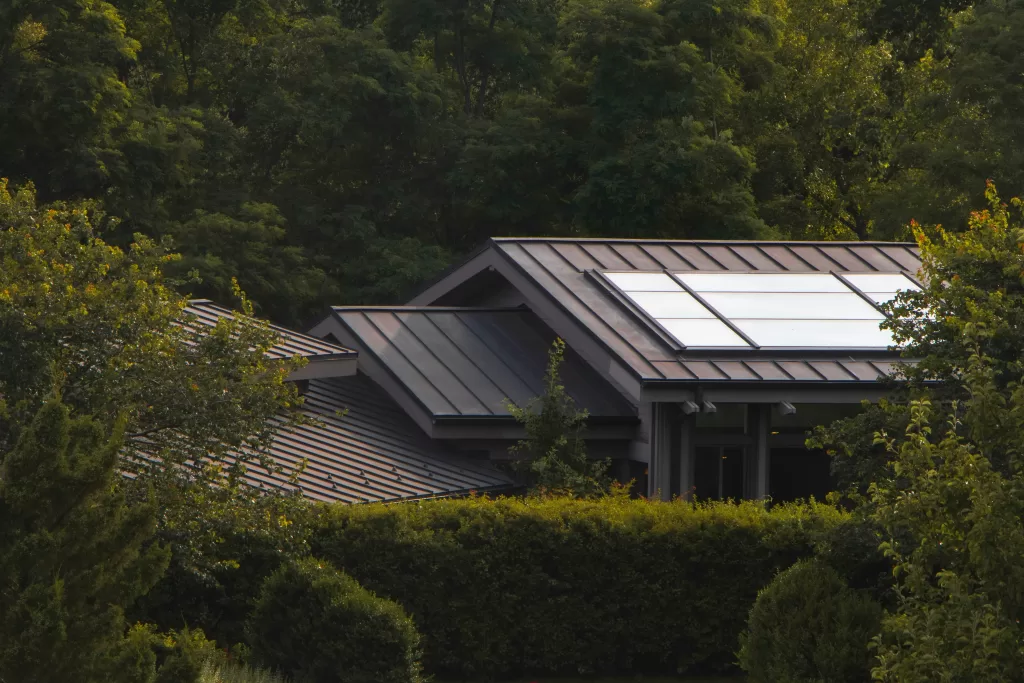A planet-friendly home is far more than a collection of energy-efficient appliances or well-insulated walls. While the label “climate smart” has become a popular shorthand for homes that cut utility bills and emissions, it often masks a narrow focus on reactive, efficiency-driven tweaks that merely slow environmental harm (Wester, 2022). These measures do not address the deeper, systemic changes needed to confront the climate crisis at its roots.
Beyond “Climate Smart”: Why Efficiency Isn’t Enough
“Climate smart” has become the catchphrase of choice for anyone hoping to reduce a home’s environmental footprint. Yet, the focus on efficiency-driven tweaks, LED bulbs, better insulation, low-flow taps, risks missing the bigger picture. These tweaks reduce utility bills and emissions incrementally. However, they rarely challenge the core systems that make modern living extractive and unsustainable. A deeper shift is needed: transforming houses from isolated units into planet-friendly homes, active, regenerative spaces that restore ecosystems, rebuild local economies, and make communities more resilient (Ahuja & Chopson, 2024).
A house’s carbon footprint is set long before occupancy. Embodied emissions from concrete, steel, and bricks account for nearly 30% of lifetime carbon output. Even if operational carbon (the emissions from daily energy use) is reduced, it can’t erase the impact of high-carbon construction. Efficiency, in this context, is reactive; regeneration, on the other hand, is proactive (Tiwari & Vij, 2024).

Source: John Thomas on Unsplash
What Makes a Home Truly Planet-Friendly? A Regenerative Vision
Clearly, a planet-friendly home rethinks how dwellings relate to the planet. It goes beyond technical fixes. Instead of seeing a house as a shelter designed to consume less, it frames it as a node in a network of planetary stewardship. This means every design choice supports four foundational priorities:
- Materials with Purpose show that construction materials like timber and lightweight cladding dramatically reduce embodied carbon (the emissions generated during material extraction, manufacturing, transport, and installation) compared to conventional options. By replacing concrete and bricks, emissions fell by 47% in the case study house (Fedeli et al., 2023). This shows materials shape climate impact more than gadgets ever could. This focus on selecting and prioritising materials with the greatest potential for reducing harm and regenerating ecosystems embodies Materiality, one of the Foundational Focus Factors (FFFs) of the THRIVE Framework, which guides the identification and prioritisation of what truly matters for long-term value and sustainability impact.
- Systems Thinking, another FFF of the THRIVE Framework, encourages seeing wholes, understanding interrelationships, and addressing root causes rather than symptoms. It helps identify leverage points for long-term transformation. Systems Thinking, when applied to buildings, reveals how considering the entire lifecycle, from raw material extraction to demolition, can unlock deeper reductions in environmental harm. Decarbonisation is achieved through integrated planning, not isolated product choices.
- Local Ecosystem Support recognises that conventional houses disrupt local habitats. However, greener designs restore them. Incorporating edible landscaping, native plants, and green roofs can rebuild lost biodiversity and pollinator populations right in the backyard.
- Community Integration reveals that even the most efficient house can’t solve climate change alone. Indeed, collective action, neighbourhood-level composting, shared rainwater systems, and cooperative solar microgrids multiply individual efforts exponentially. Together, these strategies align with the principles of Strong Sustainability, the FFF of the THRIVE Framework, which recognise that natural capital is critical, non-substitutable, and must be preserved in its own right. Rather than relying on offsets or technological substitutes, Strong Sustainability demands that homes contribute directly to regenerating natural systems.
Together, these priorities shift the conversation from minimising a single household’s carbon score to creating ripple effects that heal social and ecological systems (Fedeli et al., 2023).

Source: Zach Rowlandson on Unsplash
Design for Regeneration: Key Elements of a Planet-Friendly Home
Renewable and Local Materials
As the scientists detail, concrete and metals account for the largest portion of a home’s embodied carbon (Myint & Shafique, 2024). Therefore, replacing these with certified sustainable timber, cork, or bamboo locks away carbon. It also supports forestry practices that restore soils and habitats (Yadav & Singhal, 2024). Using locally sourced materials reduces transportation emissions. This choice strengthens regional economies by keeping money and jobs in the community (Yahia & Shahjalal, 2024).
For example, timber-framed floors and lightweight cladding made from fibre cement or recycled composites can significantly reduce emissions. These materials still offer excellent durability and strong thermal properties (Eslami, 2024). Additionally, they help avoid the severe ecological damage caused by the sand and cement industries, such as river degradation and high CO₂ emissions.
Edible Landscaping
Moreover, a truly planet-positive home doesn’t stop at the front door. Edible landscapes, such as food forests, raised vegetable beds, or vertical gardens, convert resource-consuming lawns into productive ecosystems. Such plantings sequester carbon, cool local microclimates, and produce fresh, zero-mile food, reducing emissions from industrial agriculture and transport. Importantly, they also reframe gardens as habitats for pollinators, birds, and beneficial insects, directly countering biodiversity loss driven by urban sprawl (Vatistas et al., 2022).
Rainwater Harvesting
In addition, the average household contributes significantly to stormwater runoff, which pollutes waterways and strains city infrastructure. Rainwater harvesting (gutters, tanks, and swales) transforms rainfall into an asset. Collected water can irrigate gardens or flush toilets, easing demand on municipal supplies. By slowing and storing water on-site, these systems help recharge local aquifers, reduce erosion, and buffer homes from drought (Ezz, 2025).
Passive Solar Heating and Cooling
Equally important, passive strategies such as orientation, thermal mass, shading, and natural ventilation remain the most powerful tools for slashing operational carbon. Unlike high-tech HVAC systems, passive design uses physics, not electricity, to keep spaces comfortable. Notably, the scientists’ analysis shows that changes in insulation and design can improve a home’s energy rating by 6%, translating to substantial energy savings across its lifespan (Fedeli et al., 2023). Properly designed passive homes can cut heating and cooling loads by over 80% compared to conventional builds (Mach et al., 2025).
Greywater Reuse and Composting
Moreover, planet-friendly homes close nutrient loops: greywater from showers and laundry is filtered and reused for gardens or toilets; kitchen scraps become compost, feeding the soil. These systems reduce reliance on potable water and synthetic fertilisers, minimising freshwater depletion and pollution (Filali et al., 2022). Composting also returns carbon to the soil, helping rebuild healthy microbiomes essential for food security and carbon sequestration.
Circular Resource Loops
Ultimately, a regenerative home aspires to circularity: materials and energy circulate within the system with minimal waste. Building materials should be designed for disassembly, repair, and reuse. For instance, home-scale biogas digesters can turn organic waste into cooking fuel, while solar panels and batteries create self-sufficient microgrids (Issahaku et al., 2024; Pacaud et al., 2024). Together, these measures redefine the home from an endpoint of consumption to a regenerative hub.

Source: Sam Szuchan on Unsplash
The Offsets Illusion: Why You Can’t Consume Your Way to Sustainability
Offsets promise that emissions from flights, cars, or homes can be erased with donations to tree-planting or renewable projects elsewhere. Nevertheless, offsets do not undo ecological harm or systemic injustices baked into extractive industries. A “planet-friendly home” doesn’t outsource responsibility; rather, it actively regenerates the ecosystems it touches.
Furthermore, operational carbon reductions mean little if embodied carbon remains high. Offsetting high-carbon construction merely delays meaningful change. Real progress demands shifting the materials, systems, and behaviours at the root of emissions (Fedeli et al., 2023).
From Isolated Homes to Climate-Active Communities
Meanwhile, the limitations of individual action become clear when confronting the scale of the climate crisis. Neighbourhood-level coordination is the key multiplier. Shared community solar, cooperative rainwater networks, local compost hubs, and collective edible gardens distribute benefits while building social resilience. As a result, when neighbours act together, their efforts multiply. Pollinator habitats expand, and microgrids stabilise energy supply. Collective purchasing power also reduces costs for everyone (Cheshire, 2024). This reimagines neighbourhoods as ecosystems of restoration. It mirrors the Regenerative Economy’s vision of community networks that create shared value and resilience. Regenerative Economy, an FFF of the THRIVE Framework, which prioritises ecological renewal, social equity, and long-term value creation over short-term profit. It seeks to build economic models where social well-being and ecological health are inseparable.

Source: David Clode on Unsplash
How to Reframe the Home as a Node in Planetary Stewardship
Without a doubt, a planet-friendly home is more than a personal sanctuary. It acts as a node in a regenerative network. By adding biodiversity, circular systems, renewable resources, and collective actions, each home becomes part of a living system. These homes help heal ecosystems instead of harming them. This transformation reflects the principles of a Regenerative Economy, one that restores, renews, and creates lasting value for both people and the planet.
Importantly, this new perspective exposes the flaws in outdated sustainability frameworks such as the UN’s Sustainable Development Goals (SDGs). These frameworks often focus on efficiency or small harm reductions. While SDGs raised global awareness, they don’t challenge deeper economic and material systems. In contrast, the THRIVE Framework’s Systems Thinking calls for buildings that go beyond reducing harm. It demands homes that actively benefit people and the planet.
Conclusion and Call to Action (CTA)
All things considered, the accelerating demand for adequate, affordable housing worldwide presents a critical choice. Societies must either continue with business-as-usual approaches that deepen ecological and social crises, or seize the opportunity to embed regenerative, planet-positive principles in the millions of new homes urgently needed to accommodate a rapidly urbanising population by 2030 (UN-Habitat, 2020).
Therefore, future homeowners, renovators, and builders are encouraged to:
- Demand low-carbon, renewable, and local materials.
- Design for passive comfort, not perpetual energy use.
- Replace lawns with productive, biodiverse landscapes.
- Reuse greywater and compost organic waste.
- Connect with neighbours to build resilient, climate-active communities.
Ultimately, by prioritising regenerative choices over incremental efficiencies, emissions can be nearly halved. But more importantly, these choices transform homes into engines of restoration, offering a hopeful path for humanity to not just survive, but thrive on a changing planet (Fedeli et al., 2023).

Source: Jordi Villanova on Unsplash
Achieving THRIVE goals
Achieving the THRIVE goals of Globalisation: Smart Communities, Climate Action: Mitigation & Adaptation, and Life on Earth: Human Impacts demands a regenerative approach beyond the incremental ambitions of related SDGs.
While SDG11: Sustainable Cities and Communities aims for sustainable cities, THRIVE’s Smart Communities emphasise local circular systems, collective action, and active ecosystem restoration, reframing homes as nodes in resilient networks rather than isolated units. Meanwhile, where SDG13: Climate Action focuses on climate mitigation and adaptation, THRIVE’s climate goal prioritises deep decarbonisation through materials, passive design, and community-level resource loops. Finally, although SDG14: Life Below Water and SDG15: Life on Land target life below water and on land, THRIVE’s Life on Earth goal calls for homes that restore habitats, support biodiversity, and actively repair human impacts.
By shifting from efficiency tweaks to regenerative design, these THRIVE goals achieve what SDGs alone cannot: transforming homes into engines of ecological and social renewal essential for a thriving planet.
A Thrivable Framework
The THRIVE Framework’s Foundational Focus Factors (FFFs) provide a powerful lens for creating truly planet-friendly homes. Systems Thinking ensures every element, from renewable materials to rainwater harvesting and edible landscapes, works together, maximising benefits like biodiversity and reduced emissions. Regenerative Economy moves beyond efficiency, turning homes into positive forces that restore ecosystems and support local economies through choices like sustainable timber and composting systems. Meanwhile, Strong Sustainability rejects the idea that technology alone can replace natural capital; instead, it demands that homes directly regenerate nature through circular systems such as greywater reuse and productive gardens. By integrating these principles, homes shift from isolated, consumption-focused boxes to active nodes of planetary stewardship, healing both environment and community.
To learn more about how THRIVE’s holistic approach can transform housing into engines of regeneration, explore the resources, join webinars and workshops, or follow the latest insights through the newsletter, articles, and podcast series.























